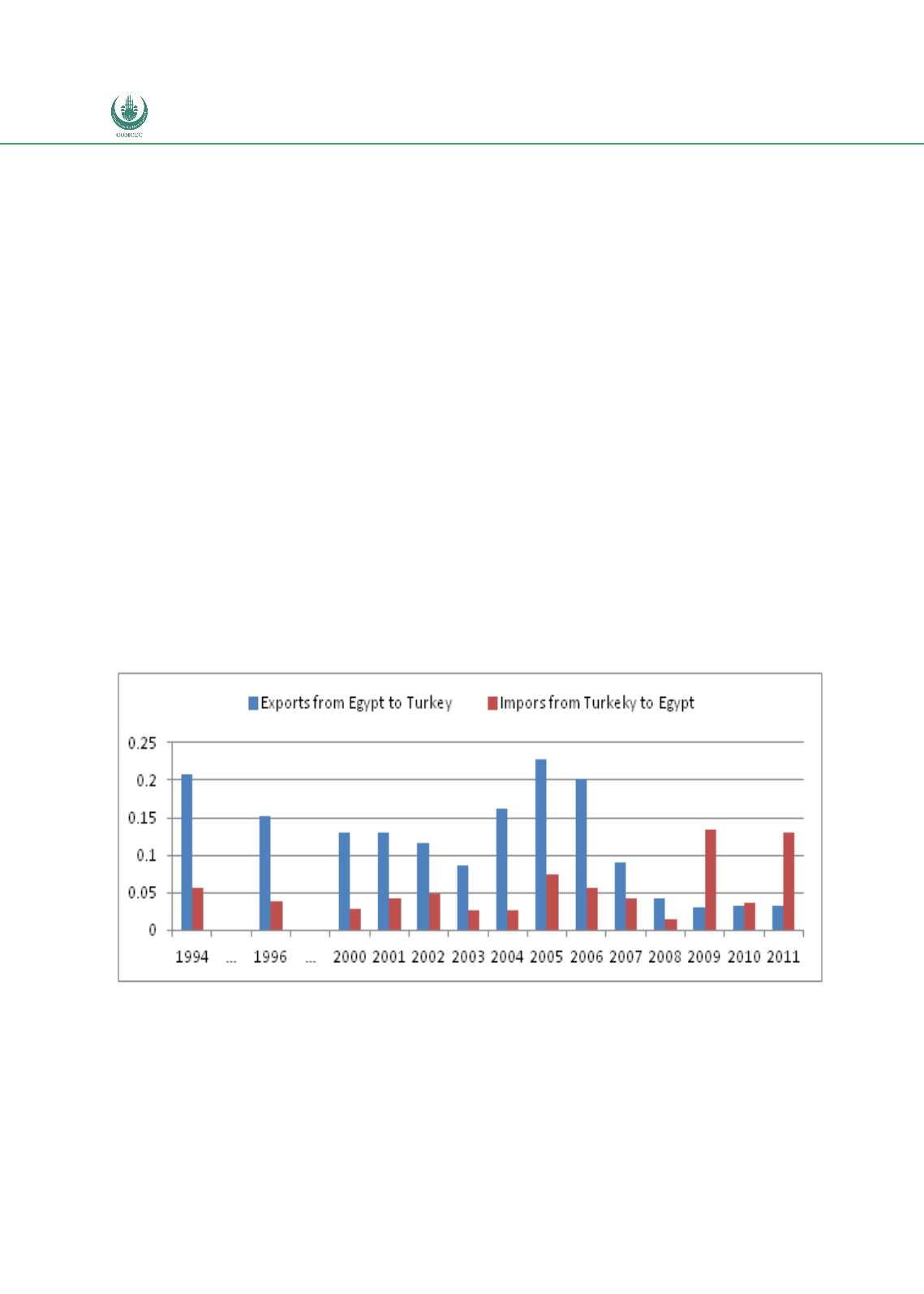

Preferential Trade Agreements and Trade Liberalization Efforts in the OIC Member States
With Special Emphasis on the TPS-OIC
120
etc., HS31 - fertilizers, and HS 52 - cotton. The top product groups imported by Egypt were
HS27 - mineral fuels, oil, distillation products, etc., HS72 - iron and steel, HS84- nuclear
reactors, boilers, machinery, etc, HS39 - plastics and articles thereof, and HS73 - articles of iron
and steel.
Moreover, since mid-2000s Egypt’s exports to Turkey have become more diversified as shown
in the figure below. Such a trend is less visible for Egypt’s imports from Turkey, although in
this case the trade concentration index used as a proxy measure of diversification may be
somewhat misleading taking into account almost doubling of Turkey’s exports to Egypt
between 2008 and 2009 with one product (bar/rod, iron or non-alloy steel HS721420) taking
one third of 2009 exports.
The evolution of bilateral trade is consistent with the hypothesis of significant intra-FTA trade
creation and/or trade diversion effects of the agreement. The rise in trade in aggregate can be
seen in Figure 39, and bilaterally in Figures 40 and 57. There appears to be a marked increase
in bilateral exports by both countries from the mid-2000s onward. In addition, the ex-ante
assessment of effects (USAID, 2007) expected somewhat more modest gains in bilateral trade.
The report highlighted investment as one area where more significant gains may materialise.
Figure 38: Concentration of Exports by Bilateral Trade: Egypt and Turkey (higher values indicate
more concentrated trade)
Calculations based on 6 digit HS Comtrade data obtained via WITS.

















